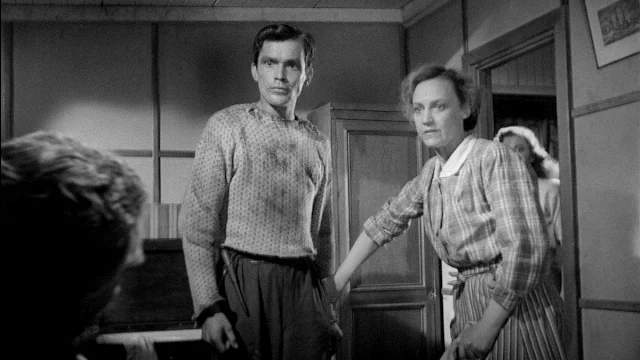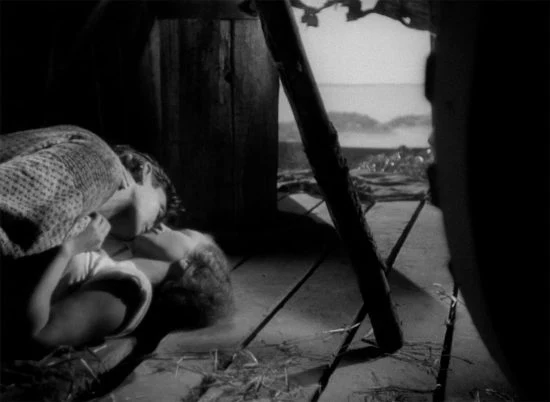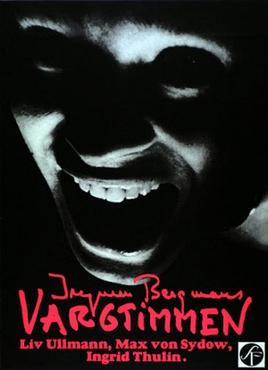A blog formerly known as Bookishness / By Charles Matthews
"Dazzled by so many and such marvelous inventions, the people of Macondo ... became indignant over the living images that the prosperous merchant Bruno Crespi projected in the theater with the lion-head ticket windows, for a character who had died and was buried in one film and for whose misfortune tears had been shed would reappear alive and transformed into an Arab in the next one. The audience, who had paid two cents apiece to share the difficulties of the actors, would not tolerate that outlandish fraud and they broke up the seats. The mayor, at the urging of Bruno Crespi, explained in a proclamation that the cinema was a machine of illusions that did not merit the emotional outbursts of the audience. With that discouraging explanation many ... decided not to return to the movies, considering that they already had too many troubles of their own to weep over the acted-out misfortunes of imaginary beings."--Gabriel García Márquez, One Hundred Years of Solitude
Search This Blog
Showing posts with label Gertrud Fridh. Show all posts
Showing posts with label Gertrud Fridh. Show all posts
Monday, June 17, 2024
A Ship to India (Ingmar Bergman, 1947)
Cast: Holger Löwenadler, Anna Lindahl, Birger Malmsten, Gertrud Fridh, Naemi Briese, Hjördis Patterson, Lasse Krantz, Jan Molander, Erik Hell, Åke Fridell, Douglas Håge. Screenplay: Ingmar Bergman, based on a play by Martin Söderhjelm. Cinematography: Göran Strindberg. Production design: P.A. Lundgren. Film editing: Tage Holmberg. Music: Erland von Koch.
Sunday, February 4, 2018
All These Women (Ingmar Bergman, 1964)
 |
| Jarl Kulle in All These Women |
Humlan (Bumblebee): Bibi Andersson
Isolde: Harriet Andersson
Adelaide: Eva Dahlbeck
Madame Tussaud: Karin Kavli
Traviata: Gertrud Fridh
Cecilia: Mona Malm
Beatrica: Barbro Hiort af Ornäs
Jillker: Allan Edwall
Tristan: Georg Funkquist
The Young Man: Carl Billquist
Director: Ingmar Bergman
Screenplay: Erland Josephson, Ingmar Bergman
Cinematography: Sven Nykvist
Production design: P.A. Lundgren
Film editing: Ulla Ryghe
Roger Ebert called Ingmar Bergman's All These Women "the worst film he has ever made," and I don't think it's because the butt of so many of the jokes in the movie was a critic. It's an arch, highly stylized comedy, supposedly inspired by Federico Fellini's 8 1/2 (1963), though apart from the zings at critics and the gathering together of the various women in an artist's life, there's not much that Bergman's film has in common with Fellini's. Bergman's artist, a cellist named Felix, has just died, and the film opens at his funeral through which a number of his "widows" parade to view the corpse. The funeral is presided over by Cornelius, Felix's supposed biographer, actually a music critic who was trying to persuade Felix to perform one of his compositions: "A Fish's Dream, Abstraction #4." The film flashes back to the days before Felix's death when Cornelius arrived at the cellist's estate and encountered his wife, Adelaide; his mistress, called "Bumblebee"; and several other women who had various connections, presumably sexual, to Felix. What follows is much running about, some slapstick, some misfired attempts by Cornelius to bed Bumblebee while trying to gather information about Felix's private life, and much tiresome and unfunny ado set to music cues ranging from Bach to "Yes, We Have No Bananas." All These Women was Bergman's first film in color, but the print shown on Turner Classic Movies is sadly faded, with captions that are hard to read. I also sampled the print on the Criterion Channel; it's better, but still rather washed-out looking. The cinematographer, Sven Nykvist, is a celebrated master, so the color flaws may be that of the aging Eastmancolor negative. Only the fact that the film is a lesser work of the director who gave us The Seventh Seal (1957), Persona (1966), and Fanny and Alexander (1982) really argues for restoring it, however.
Monday, June 5, 2017
Hour of the Wolf (Ingmar Bergman, 1968)
Ingmar Bergman's Hour of the Wolf is unquestionably a "horror movie" -- i.e., one filled with incidents and images and narrative details aimed at shocking the viewer. It takes place on a remote island with a mysterious castle. Figures appear who may be either humans or demons. There's a scene in which a man walks up the wall and across the ceiling and one in which a woman peels off first her wig and then her face. The protagonist either murders or imagines that he has murdered a small boy. That protagonist is Johan Borg (Max von Sydow), an artist, who has come to the island with his wife, Alma (Liv Ullmann), to recover after an illness -- physical or mental, we're not told. Johan can't sleep, and Alma sits up with him at night while he tells her about the demons whose images he has sketched, so no wonder that her own mental state becomes fragile. One day, she meets an old woman who tells her that she should read Johan's diary, which he keeps under his bed. She does so, rather like Bluebeard's wife persisting in opening his castle's doors, uncovering some disturbing entries regarding his continued obsession with an old love, Veronica Vogler (Ingrid Thulin). They're invited to a dinner party at the castle by the baron (Erland Josephson), where they meet a variety of unlovely sophisticates and are entertained by a rather bizarre puppet show excerpt from Mozart's The Magic Flute (an opera that Bergman would film, in a less bizarre manner, seven years later). But the climax of the evening comes when the baroness (Gertrud Fridh) takes the Borgs to her bedroom to show off her prized possession: Johan's portrait of Veronica Vogler. From then on, it's a deep descent into madness for Johan and a desperate attempt by Alma to save both of them from self-destruction. The "creep factor" in Bergman's movies is never entirely missing, but Hour of the Wolf cranks it up higher than ever. The problem is that the creepiness is sustained almost to the point of tedium, and with a concomitant loss of credibility. The remote island setting prevents the film from grounding itself in normality, so that the action plays out on one sustained note of oppressive isolation. Hour of the Wolf has many admirers, who rightly point out that Bergman, with the considerable help of his actors and his cinematographer, Sven Nykvist, has crafted a nightmare of erotic obsession with the utmost skill. But I like to compare Hour of the Wolf to another horror movie released the same year, Roman Polanski's Rosemary's Baby, a "commercial" product aimed at a general audience, which suggests evil things going on beneath the surface of a commonplace urban setting, and ask which is the more successful: the sustained psychological oppressiveness of the Bergman film or the sinister mixture of comedy and shock of the Polanski movie?
Saturday, April 16, 2016
Wild Strawberries (Ingmar Bergman, 1957)
The portrait of old age in Wild Strawberries was created by a writer-director who was 39, which is about the right time for someone to become obsessed with the past and with the portents of dreams. In the film, Isak Borg (Victor Sjöström) is 78, and by that time -- speaking as one who is nearing that age -- most of us have come to terms with the past and made sense of (or perhaps just accepted as a given) the memories and dreams that persist in haunting us. But although Bergman's film, one of the handful of breakthrough films he made in the mid-1950s, may not ring entirely true psychologically, it holds up thematically. Isak Borg is about to be commemorated with an honorary degree, one that stamps him as over the hill, and it's not surprising that it forces him to reflections about the course of his life. He is not about to go gentle into a night that he thinks of as neither good nor bad, but the journey he takes during the film -- this is an Ingmar Bergman "road movie," after all -- helps him decide to accept his life, mistakes and all. The brilliantly crabby performance by Sjöström holds it all together, even though the movie occasionally misfires: The squabbling young hitchhikers Anders (Folke Sundquist) and Viktor (Björn Bjelfenstam), who come to blows over religious faith, could almost be a self-parody of Bergman's own obsession, which would play itself out rather tiresomely in his "trilogy of faith," Through a Glass Darkly (1961), Winter Light (1963), and The Silence (1963). And the dream sequence in which Borg sees his late wife (Gertrud Fridh) and her lover (Åke Fridell) adds little to our understanding of the character. It's also possible to find the reconciliation of Borg's son (Gunnar Björnstrand) and daughter-in-law (Ingrid Thulin) a little too easily achieved, as if thrown in as a correlative to Borg's own affirmation. The radiant performance of Bibi Andersson in the double role of Borg's cousin Sara and the young hitchhiker who shares her name, however, almost brings the film into convincing focus. I don't think Wild Strawberries is a masterpiece, but it's certainly one of the essential films in the Bergman oeuvre.
Monday, March 21, 2016
The Devil's Eye (Ingmar Bergman, 1960)
 |
| Jarl Kulle and Bibi Andersson in The Devil's Eye |
Subscribe to:
Posts (Atom)












